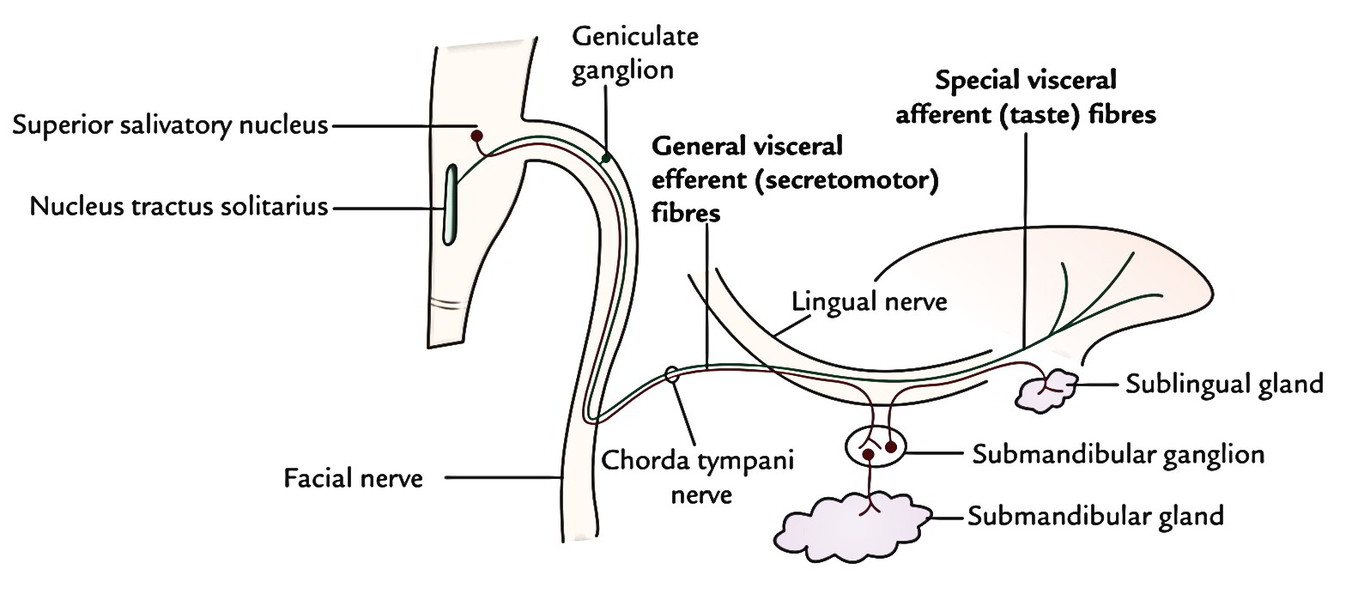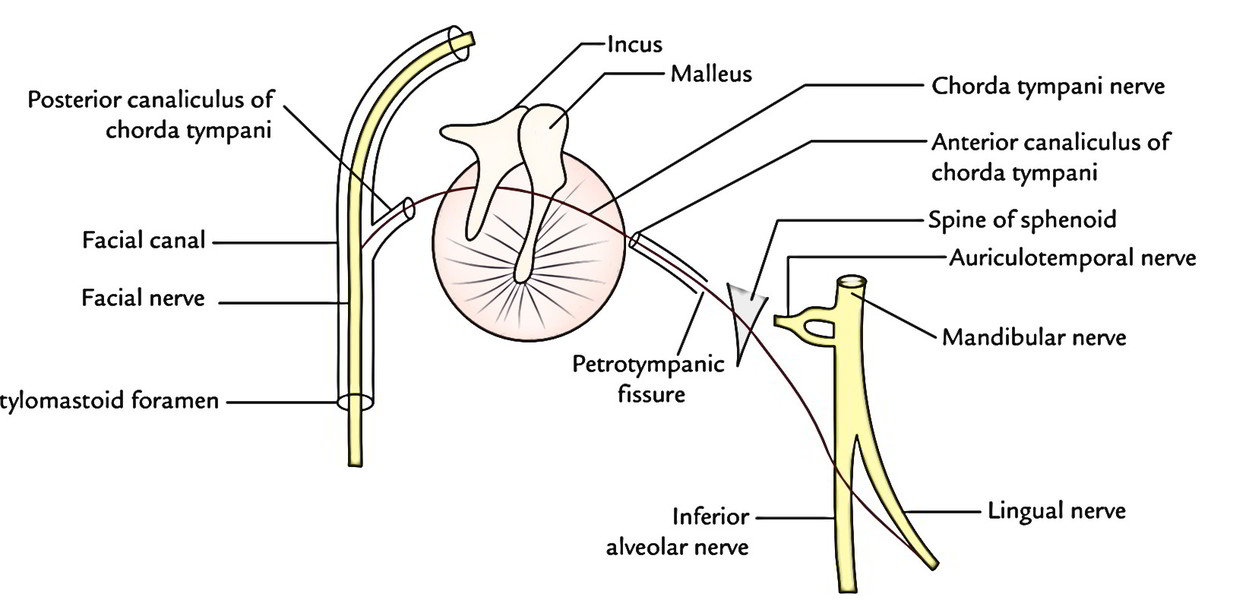It is a slim branch of facial nerve. Due to its intimate relationship to the middle ear (tympanum) it is called chorda tympani nerve.
Function Parts
The chorda tympani nerve includes:
General visceral efferent fibres: All these are preganglionic parasympathetic (secretomotor) fibres to submandibular and sublingual salivary glands.
Special visceral afferent fibres: These fibres take taste sensations from anterior ⅔rd of tongue (with the exception of vallate papillae).
Origin, Course and Relationships
Inside the posterior wall of the tympanic (middle ear) cavity, it appears from facial nerve in the facial canal about 6 millimeters above the stylomastoid foramen. It runs across the lateral wall (tympanic membrane), before that it enters the middle ear via the posterior canaliculus of chorda tympani in the posterior wall. Here it crosses the lateral aspect of long process of incus and medial aspect of handle of malleus. At the anterior margin of tympanic membrane it enters anterior canaliculus in the anterior wall of the middle ear goes through canaliculus and issues at the base of skull via medial end of petrotympanic fissure. It then goes medially, forwards and downwards, grooves the medial side of the spine of the sphenoid, running anteroinferiorly deep to lateral pterygoid to join the posterior aspect of the lingual nerve about 2 cm below the base of the skull.
Distribution
- It supplies secretomotor fibres to submandibular and sublingual glands via the submandibular ganglion.
- It carries taste sensations from anterior ⅔rd of the tongue (with the exception of vallate papillae).



 (60 votes, average: 4.60 out of 5)
(60 votes, average: 4.60 out of 5)